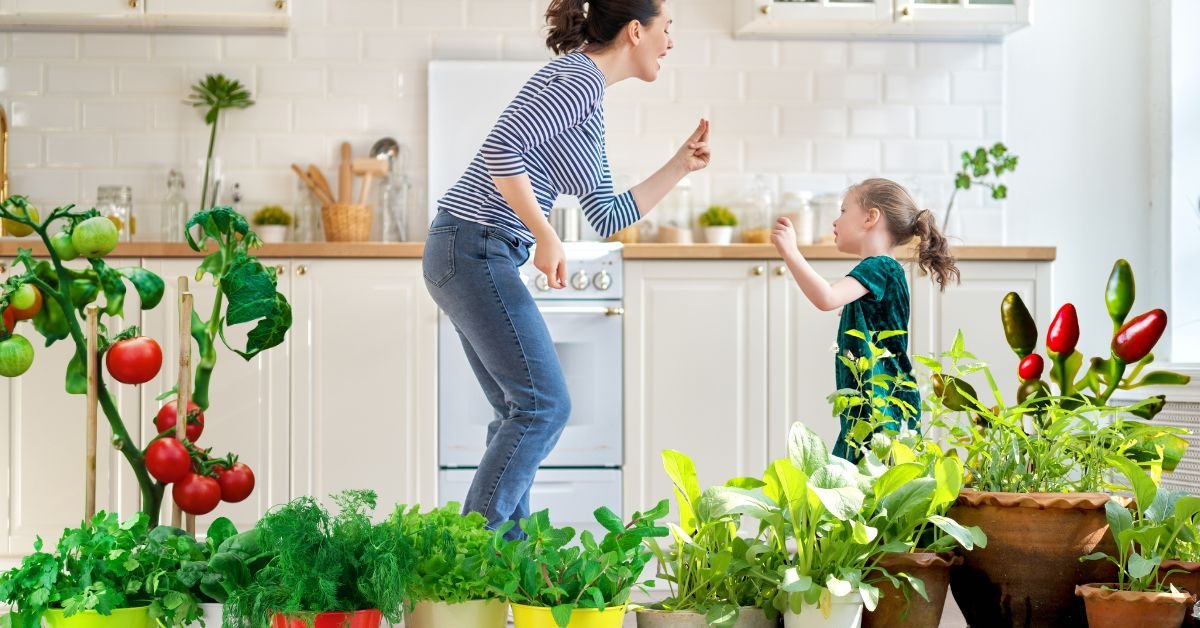Kitchen Gardening in India: Welcome to the heart of every Indian home – the kitchen! Today, we’re diving into the world of kitchen gardening, a delightful journey where your home transforms into a haven of fresh, flavorful ingredients. In a country known for its diverse culinary tapestry, cultivating your own mini-garden can add a burst of vibrancy to your daily meals.
The Spice Chronicles
Imagine a pinch of homegrown coriander in your curry or a dash of fresh mint in your chutney. Kitchen gardening in India isn’t just about veggies; it’s a spice expedition! From robust cumin to aromatic fenugreek, your backyard can become a spice bazaar, elevating your dishes to new heights.
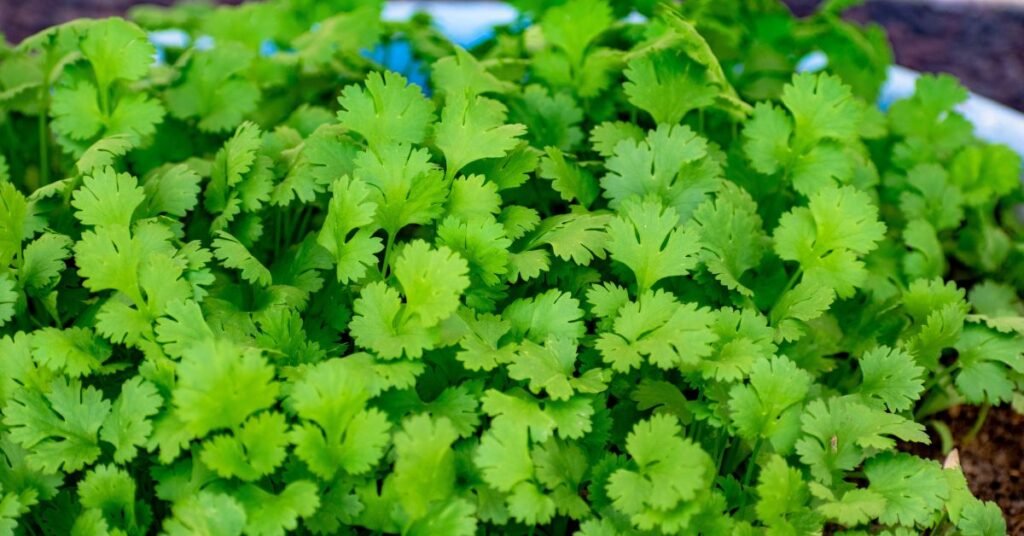
Spices are the heartbeat of Indian cuisine, and what better way to embrace their essence than by growing them in your own kitchen garden? Let’s embark on a flavorful journey through the Spice Chronicles.
The Spice Symphony
Imagine a symphony of aromas and flavours right at your fingertips. From the fiery red of homegrown chili peppers to the earthy warmth of cumin, your garden can be a living spice cabinet.
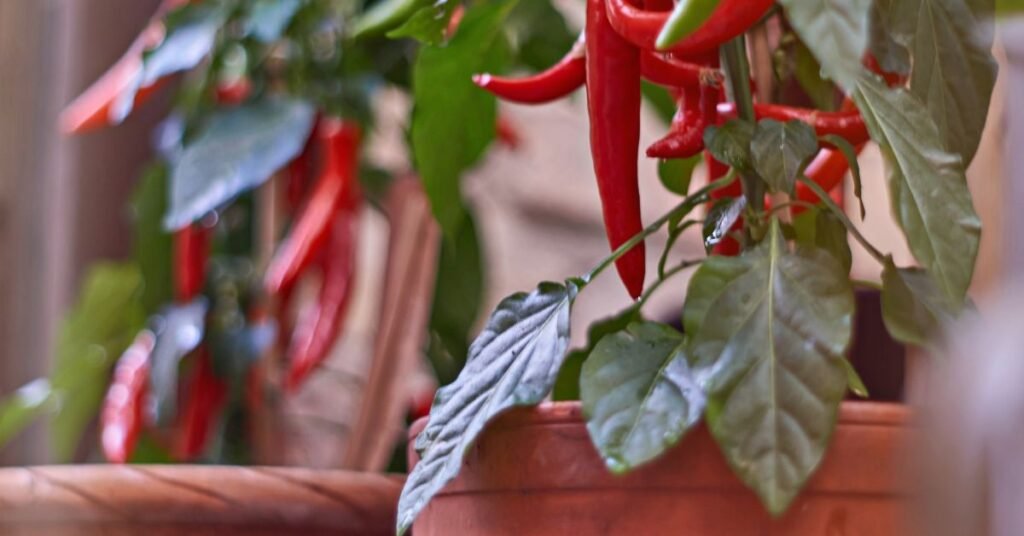
Spice Palette – Aromatic Allies
Create a spice palette with coriander, cumin, fenugreek, and mustard. These aromatic allies will not only add depth to your dishes but also thrive in the Indian climate.
Fact: Spice Roots Did you know that many Indian spices have medicinal properties? Turmeric, a staple in Indian cooking, is celebrated for its anti-inflammatory benefits. Growing your own ensures a fresh supply of these health-promoting wonders.
Crafting a Spice Haven
let’s delve into the art of crafting a spice haven in your garden.
Container Gardening
Spices often flourish in containers, making them perfect for small spaces. Planting in pots allows you to control soil conditions and move them to catch the perfect amount of sunlight.
Spice Cheat Sheet
| Spice | Ideal Conditions | Growing Season | Tips |
|---|---|---|---|
| Cumin | Full sunlight, well-drained | Spring to Summer | Regular pruning for bushier plants |
| Coriander | Partial shade, well-drained | Winter | Harvest leaves and seeds separately |
| Fenugreek | Full sunlight, moist soil | Autumn to Winter | Frequent harvesting encourages growth |
| Mustard | Full sunlight, well-drained | Winter | Plant in clusters for a striking display |
| Chili Peppers | Full sunlight, warm climate | Spring to Summer | Use a balanced fertilizer for robust plants |
Spice Up Your Life – Tips for Success
Growing spices comes with its own set of nuances. Let’s uncover some tips to ensure a thriving spice garden.
Companion Planting
Pair your spices strategically. For example, planting coriander near tomatoes can enhance the flavor of both. Research companion planting to discover the perfect spice partnerships.
Pruning Techniques
Master the art of pruning to keep your spice plants compact and productive. Regularly trim coriander to prevent bolting and encourage a steady supply of fresh leaves.
Spice Traditions
Spices have been an integral part of Indian culture for centuries. They not only tantalize the taste buds but also play a role in rituals, medicine, and even as natural dyes.
The Spice Harvest
As your spice garden blossoms, it’s time to reap the rewards. Harvesting spices is an art that enhances both the quantity and quality of your yields.
Harvesting Rituals
Harvesting spice leaves early in the morning ensures maximum flavour. For seeds like cumin and coriander, wait until the seed heads turn brown before harvesting for the best potency.
Spice Storage Guide
| Spice | Storage Method | Shelf Life | Usage Tips |
|---|---|---|---|
| Cumin Seeds | Airtight container, cool, dark | 1-2 years | Dry roast before use for enhanced aroma |
| Coriander | Airtight container, cool, dark | 1-2 years | Grind seeds just before using for freshness |
| Fenugreek Seeds | Airtight container, cool, dark | 1-2 years | Soak in water before use to reduce bitterness |
| Mustard Seeds | Airtight container, cool, dark | 2-3 years | Temper in hot oil to release their pungency |
| Chili Peppers | Airtight container, cool, dark | 1-2 years | Use dried peppers for a concentrated flavor |
Spice Tales from the Garden
Every spice has its story, and your kitchen garden becomes the stage for these tales. From seed to plate, relish the journey as your Spice Chronicles unfold, turning each meal into a culinary masterpiece. Happy spicing!
Window Sills Gardens
Limited space? No problem! Whether you reside in a bustling city or a quaint village, kitchen gardening adapts to your surroundings. Turn your window sills into a herb oasis or conquer your rooftop with an array of pots. Embrace the green revolution, one plant at a time!

When it comes to kitchen gardening, limited space is no excuse to miss out on the joy of cultivating your own greens. In this chapter, we’ll explore the enchanting world of Window Sill Gardens, where even the tiniest spaces can burst with greenery.
The Window Sill Canvas
Your kitchen window sill is more than just a ledge; it’s a canvas waiting to be painted with the vibrant hues of herbs and small vegetables.
Sunlight Strategy
Position your pots strategically to catch the sunlight. Most herbs and greens need at least 4-6 hours of direct sunlight, so make sure your window receives ample rays during the day.
Sunlight Varieties
Different herbs have varying sunlight requirements. While basil and mint thrive in full sun, parsley and chives are content with partial shade, making them perfect window sill companions.
Mini Marvels – Choosing the Right Plants
Not all plants are created equal when it comes to small spaces. Let’s dive into the world of mini marvels perfect for your window sill haven.
Compact Culinary Stars
Opt for compact varieties like cherry tomatoes, dwarf basil, and micro greens. These not only fit snugly on your window sill but also pack a punch in terms of flavour.
Window Sill Wonders
| Plant | Ideal Space | Sunlight Needs | Special Care |
|---|---|---|---|
| Cherry Tomatoes | Hanging pots, baskets | Full sunlight | Support for vines |
| Dwarf Basil | Small pots | Full sunlight | Regular pruning |
| Microgreens | Shallow trays | Partial to Full | Frequent watering |
| Chives | Small pots | Partial shade | Divide for growth |
| Mint | Hanging pots, baskets | Partial to Full | Contain root spread |
Container Magic – Tips for Success
Transforming your window sill into a thriving garden requires a bit of container magic. Let’s uncover some tips to make the most of your limited space.
Vertical Gardening
Utilize vertical space by hanging pots or installing a vertical garden. This not only adds a touch of visual appeal but also maximizes the number of plants you can cultivate.
Modular Planters
Invest in modular planters that can be stacked or arranged to suit your space. These space-saving wonders not only look stylish but also provide the flexibility to rearrange your mini garden as needed.
NASA-Approved Herbs NASA's Clean Air Study identified certain plants, including herbs like basil and mint, as natural air purifiers. Your window sill garden not only adds flavour to your dishes but also cleanses the air around you.
Window Sill Harvest Delights
Harvesting from your window sill garden is a daily delight. Let’s explore the art of picking and savoring the flavors from your petite paradise.
Harvesting Routine
Harvest herbs regularly to encourage bushy growth. For microgreens and cherry tomatoes, pick them when they reach their peak ripeness for the best flavor.
Window Sill Harvest Calendar
| Plant | Time to Harvest | Harvesting Tips |
|---|---|---|
| Cherry Tomatoes | 60-80 days | Harvest when fully red and firm |
| Dwarf Basil | 30-60 days | Regularly prune to encourage growth |
| Microgreens | 1-3 weeks | Harvest when the first true leaves appear |
| Chives | 60-90 days | Cut 2 inches above the soil, regrows quickly |
| Mint | Continuous harvest | Pinch off the tips for bushier growth |
Choosing the Right Seeds for Kitchen Gardening in India
Let’s talk seeds – the unsung heroes of your kitchen garden. Discover the magic of heirloom varieties, passed down through generations. From the humble tomato to the mighty okra, each seed tells a story. Unearth the secrets of seed-saving and watch your garden thrive!

Embarking on your kitchen gardening adventure begins with a single, vital choice – selecting the right seeds. let’s navigate the fascinating world of seeds, exploring varieties, tips, and the secrets to ensuring a flourishing garden.
Read Also : https://idigibuzz.com/coriander-kitchen-gardening-in-india-steps-how-to-grow/
The Seed Safari
Imagine seeds as the treasure map to your culinary dreams. From the tiniest basil seed to the robust tomato seed, each one holds the promise of a delicious harvest.
Know Your Zones
India’s diverse climates necessitate understanding your planting zone. From the tropical warmth of Kerala to the chilly winters of Himachal, seeds should align with your local climate for optimal growth.
Seed Selection Strategies
Not all seeds are created equal, and choosing the right ones is akin to assembling a winning team for your garden. Let’s delve into the strategies for seed selection.
Heirloom vs. Hybrid
Heirloom seeds passed down through generations, offer unique flavours and adaptability. Hybrids, on the other hand, may offer specific traits like disease resistance. Balance both for a diverse and resilient garden.
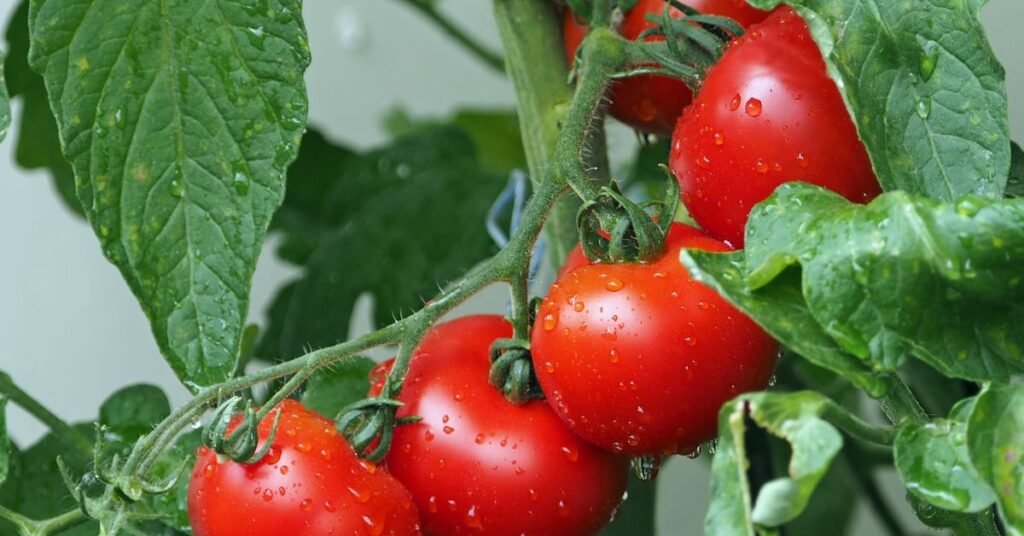
Must-Have Seeds for Kitchen Gardening in India
| Seed | Variety | Characteristics |
|---|---|---|
| Tomatoes | Heirloom: Brandywine | Rich flavor, adaptable to climates |
| Chillies | Hybrid: Sannam | High yield, disease-resistant |
| Spinach | Heirloom: Palak | Slow bolting, ideal for all seasons |
| Okra | Hybrid: Bhindi F1 | Early harvesting, pest-resistant |
| Coriander | Heirloom: Cruiser | Quick germination, strong aroma |
Saving and Sharing Seeds
Beyond sowing and growing, kitchen gardening in India is about preserving biodiversity and sharing the wealth of seeds. Let’s explore the wisdom of seed saving and sharing.
Save Your Favorites
Save seeds from your best-performing plants for future seasons. This not only saves money but also adapts your garden to local conditions over time.
Seed Exchange Network Table
| Platform | Description |
|---|---|
| India Seed Network | Online platform facilitating seed exchanges |
| Local Gardening Clubs | Join community clubs for seed swaps |
| Farmer’s Markets | Participate in seed exchange events at markets |
Decoding Seed Packets
Understanding seed packets is like deciphering a secret code. Let’s unlock the mysteries and ensure you pick the perfect seeds for your kitchen garden.
Read the Sowing Instructions
Every seed packet is a treasure trove of information. Pay attention to sowing instructions, including depth, spacing, and recommended soil conditions. This ensures your seeds have the best chance of germination.
Seed Packet Decoder
| Term | Meaning |
|---|---|
| Germination Time | Number of days it takes for seeds to sprout |
| Days to Maturity | Time from germination to harvest |
| Sunlight Requirements | Full Sun, Partial Sun, Full Shade |
| Planting Depth | How deep to sow the seeds in the soil |
| Spacing | Recommended distance between plants |
| Soil Requirements | Type of soil the seeds prefer |
| Watering Needs | Frequency and amount of water required |
Seed Storage
Proper seed storage is key to preserving their vitality. Let’s uncover the secrets of storing seeds to ensure they remain viable for future plantings.
Cool, Dark, and Dry
Store seeds in a cool, dark, and dry place. Consider using airtight containers or resealable bags to protect them from moisture and pests.

Seed Viability Guide
| Seed Type | Average Viability Period | Storage Tips |
|---|---|---|
| Tomato | 4-7 years | Keep in a cool, dark place, away from humidity |
| Cucumber | 5-7 years | Store in an airtight container in the fridge |
| Spinach | 2-4 years | Keep in a cool, dark place |
| Radish | 4-6 years | Avoid exposure to extreme temperatures |
| Coriander | 3-5 years | Store in a cool, dry place |
Troubleshooting Seeds
No journey is without its bumps, and seeds are no exception. Let’s troubleshoot potential seed issues to ensure a thriving garden.
Damping Off Prevention
Damping off, a common seedling disease, can be prevented by using sterile soil, proper spacing, and adequate ventilation.
Thin Your Seedlings
Overcrowded seedlings compete for resources. Thin them out once they develop true leaves to give each plant ample space to grow.
Seasonal Planting : Kitchen Gardening in India
In India, every season has its own rhythm, and your kitchen garden can dance to that tune. Learn the art of seasonal planting – monsoons for leafy greens, winters for cruciferous delights. Syncing your garden with nature’s melody ensures a continuous harvest and a sustainable, eco-friendly approach.
The Indian Seasons harmony
India, with its diverse climatic regions, experiences six distinct seasons. From the scorching summer to the monsoon rains and the crisp winter breeze, each season sets the stage for a unique gardening performance.

Understand Your Local Climate
Before delving into seasonal planting, understand the microclimate of your region. Coastal areas might have milder winters, while mountainous regions may experience early frosts. Knowing your climate ensures you align your garden with nature’s cues.
Rabi and Kharif Crops
Traditional Indian agriculture follows the Rabi (winter) and Kharif (summer) cropping seasons. By incorporating these practices into your kitchen garden, you align with centuries-old agricultural wisdom.
Rabi – Winter Planting
As winter unfolds its gentle embrace, the Rabi season beckons with opportunities for cultivating cool-weather crops that thrive in the subtleness of the cold.
Cool-Weather Champions
Opt for leafy greens like spinach, fenugreek, and mustard during the Rabi season. These crops not only love the cooler temperatures but also enrich your winter meals with freshness.

Rabi Season Plant Guide
| Crop | Planting Time | Harvest Time | Tips |
|---|---|---|---|
| Spinach | October to November | January to February | Harvest outer leaves for continuous growth |
| Fenugreek | October to November | December to January | Frequent harvesting encourages bushiness |
| Mustard | October to November | February to March | Plant in well-drained soil for optimal growth |
| Radish | October to November | December to January | Provide consistent moisture for tender roots |
Monsoon Magic – Kharif Planting
With the arrival of monsoon rains, the Kharif season unfolds, bringing a burst of life to your garden. Embrace the rain-fed fertility and cultivate crops that revel in the moisture.
Rain-Loving Delights
Sow crops like tomatoes, okra, and cucumbers during the monsoon. These thirst-quenching vegetables flourish in the dampness of the season.
Organic Monsoons
Monsoons provide a natural boost to your garden. Rainwater, rich in nutrients, promotes organic growth without the need for excessive artificial fertilizers.
Sowing the Seeds of Spring
As winter bids adieu and the temperatures rise, it’s time for the spring symphony. The arrival of spring opens the door to a diverse range of crops, making it a vibrant season for your kitchen garden.
Versatile Spring Staples
Plant versatile crops like tomatoes, bell peppers, and eggplants during spring. These warm-season vegetables thrive in the balmy temperatures, promising a bounty in the coming months.
Spring Sensations
| Crop | Planting Time | Harvest Time | Tips |
|---|---|---|---|
| Tomatoes | February to March | April to June | Provide support for growing vines |
| Bell Peppers | February to March | April to June | Mulch to retain moisture and deter weeds |
| Eggplants | February to March | April to June | Harvest when fruits are glossy and firm |
| Cucumbers | February to March | April to June | Train vines for vertical growth |
Beating the Summer Heat
As the sun intensifies, the summer season calls for a strategic approach to keep your garden thriving. Choose heat-tolerant crops that can withstand the sizzling temperatures.
Heat-Resistant Heroes
Opt for heat-resistant crops like okra, brinjal, and gourds during the summer. These vegetables not only endure the soaring temperatures but also add a touch of diversity to your summer meals.
Mulching Magic
Mulching is your summer garden’s best friend. Applying a layer of organic mulch around your plants helps retain moisture, suppress weeds, and regulate soil temperature.
Autumn Abundance
As the temperatures cool and the festive season approaches, autumn ushers in a bountiful harvest. Make the most of this season by planting crops that thrive in the mild weather.
Autumn Harvest Gems
Choose crops like carrots, beets, and cauliflower for the autumn season. These cool-weather delights bring a spectrum of colors and textures to your garden.
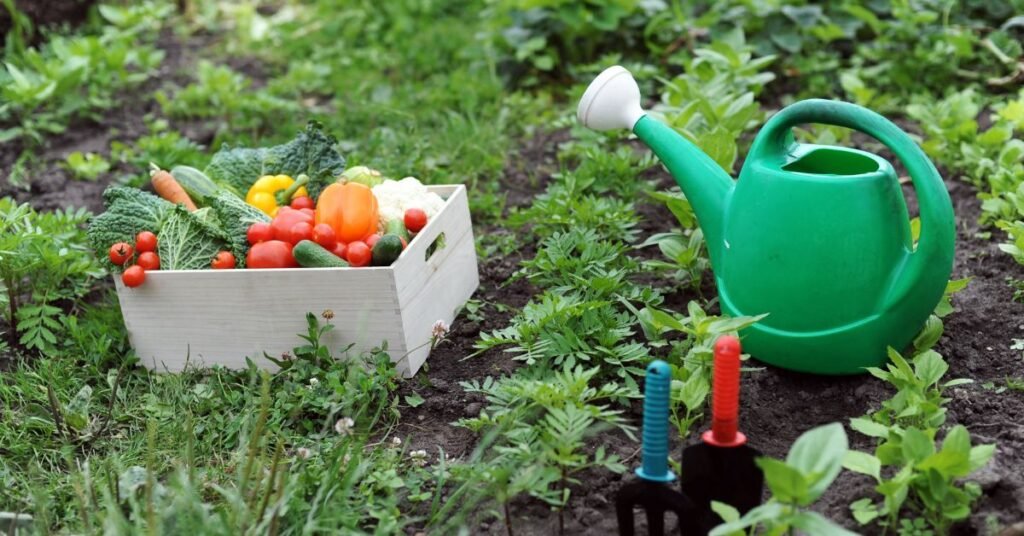
Autumn Harvest Guide
| Crop | Planting Time | Harvest Time | Tips |
|---|---|---|---|
| Carrots | August to September | October to December | Choose loose soil for straight roots |
| Beets | August to September | October to December | Harvest leaves for salads, roots for cooking |
| Cauliflower | August to September | October to December | Protect curds from direct sunlight |
| Broccoli | August to September | October to December | Harvest before the buds fully open |
Soil Composition : Kitchen Gardening In India
Beyond the tangible rewards, kitchen gardening is therapy for the soul. Sink your hands into the soil, witness the magic of germination, and feel the connection with nature. Gardening isn’t just about growing plants; it’s about nurturing your well-being.
In the world of kitchen gardening, the soil is the silent partner that nurtures and sustains your plants. In this chapter, we’ll dig deep into the art of soil management for small kitchen spaces in India, unraveling the secrets to create a fertile ground for a flourishing garden.
The Foundation of a Thriving Garden
The soil is not just dirt; it’s a living ecosystem teeming with microscopic organisms, nutrients, and a delicate balance that supports plant life. In a small kitchen garden, understanding and optimizing your soil is crucial for success.
Soil Composition Awareness
Before you start planting, get to know your soil. Is it sandy, loamy, or clayey? Understanding the composition allows you to tailor your gardening approach for optimal results.
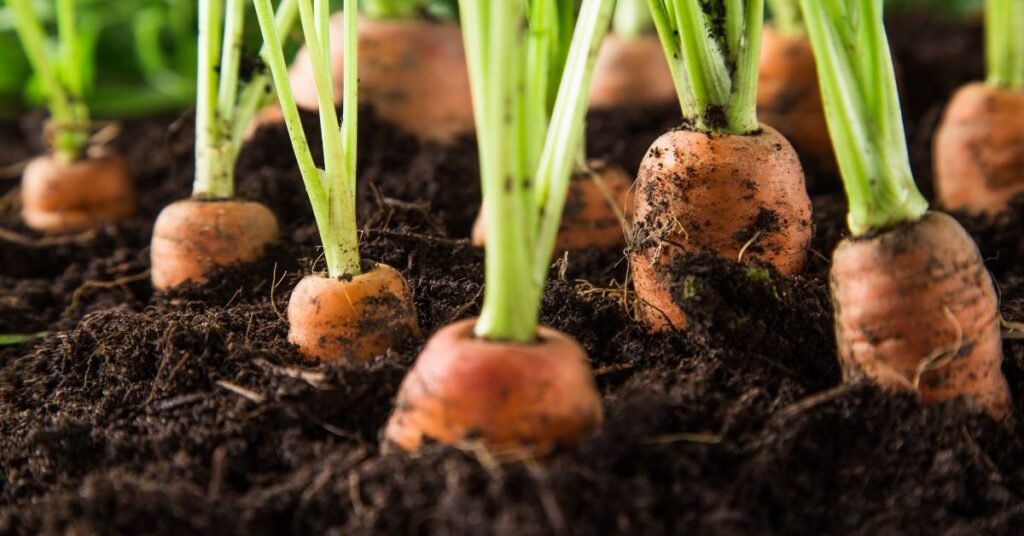
Indian Soil Diversity
India boasts a diverse range of soils, from the red laterite soils of the Deccan Plateau to the fertile alluvial soils of the Gangetic plains. Each region’s soil characteristics influence the types of plants that thrive there.
Crafting the Perfect Soil Mix
Creating the ideal soil mix is an art that involves blending different components to provide the perfect environment for your plants to thrive.
DIY Potting Mix
For container gardening in small spaces, create your potting mix using a blend of garden soil, well-rotted compost, and coco coir or perlite for aeration. This ensures good drainage and a nutrient-rich environment.
Soil Mix Components
| Component | Purpose | Tips |
|---|---|---|
| Garden Soil | Provides essential minerals and microbes | Ensure it’s free from pests and diseases |
| Compost | Adds organic matter and improves soil structure | Use well-rotted compost for better results |
| Coco Coir | Enhances water retention and aeration | Ideal alternative to peat moss |
| Perlite | Improves drainage and prevents soil compaction | Lightweight and aids root development |
Soil pH and Plant Health
The pH level of your soil directly affects nutrient availability to plants. Understanding and adjusting the pH can make a significant difference in your garden’s overall health.
pH Testing
Regularly test the pH of your soil using a pH testing kit. Most vegetables and herbs prefer a slightly acidic to neutral pH range (6.0 to 7.0), ensuring optimal nutrient uptake.
Acidic and Alkaline Soils in India
Certain regions in India, like parts of the Western Ghats, may have naturally acidic soils due to high rainfall, while alkaline soils are prevalent in arid regions like Rajasthan. Knowing your soil’s pH helps in selecting plants that thrive in specific conditions.
Sustainable Soil Practices
Maintaining a sustainable garden involves practices that nourish the soil for the long term. Let’s explore ways to keep your small kitchen garden thriving in an eco-friendly manner.
Crop Rotation
Practice crop rotation to prevent soil-borne diseases and maintain soil fertility. Rotate your crops annually, and avoid planting the same family of vegetables in the same spot consecutively.
Traditional Indian Farming Wisdom
In India, traditional farming practices, like mixed cropping and organic farming, have sustained agriculture for centuries. Adopting these methods in your small kitchen garden can contribute to sustainable soil health.
DIY Planters – From Trash to Treasure
Why buy expensive planters when you can create wonders from everyday items? Embrace the eco-friendly side of kitchen gardening by upcycling old buckets, tin cans, or even broken teacups. Unleash your creativity and let your garden bloom in unconventional pots!
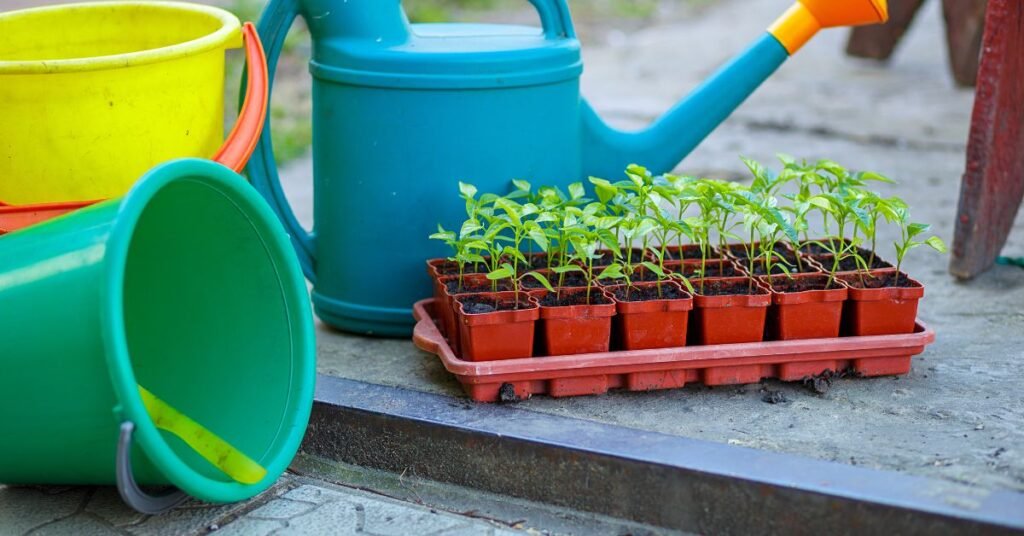
Gardening enthusiasts, rejoice! Elevate your gardening game with a sustainable twist by turning ordinary household items into extraordinary planters. Embrace the eco-friendly spirit and inject personality into your garden with these creative, cost-effective, and environmentally conscious DIY planters.
Unconventional Planter Ideas
Upcycled Buckets:
Old plastic or metal buckets can find a new purpose as charming planters. Drill drainage holes in the bottom, add a coat of colorful paint, and voilà! You have a rustic and functional planter ready to showcase your favorite blooms.
Tin Can Marvels:
Before tossing those tin cans into the recycling bin, consider their potential as planters. Clean them thoroughly, decorate with paint or decoupage, and you’ll have a stylish container for herbs or small flowers. Arrange several cans together for an eclectic display.
Broken Teacup Delight:
Give chipped or cracked teacups a second chance as whimsical planters. Their petite size makes them ideal for small succulents or herbs. Place them on windowsills or create a teacup garden centerpiece for a touch of vintage charm.
Tips for Successful DIY Planters
Proper Drainage:
Regardless of the chosen item, ensure adequate drainage for your plants. Drill or punch holes in the bottom of containers to prevent waterlogging, promoting healthier plant growth.
Soil Selection:
Select a well-draining potting mix suitable for the plants you intend to grow. A blend of potting soil, perlite, and vermiculite provides an ideal environment for most plants.
Matching Plants to Containers:
Consider the size and depth of your DIY planters when selecting plants. Compact plants like herbs, succulents, or small flowers work well in smaller containers, while larger pots can accommodate more extensive root systems.

Engaging Facts about Upcycling
Environmental Impact:
By repurposing household items into planters, you reduce waste and contribute to a more sustainable lifestyle. It’s a small but impactful step toward minimizing your ecological footprint.
Cost Efficiency:
DIY planters not only benefit the environment but also your wallet. Upcycling items you already have at home eliminates the need to purchase expensive planters, making gardening a budget-friendly hobby.
Showcase Your Green Thumb
| Upcycled Item | Plant Selection | Decorative Touch |
|---|---|---|
| Vintage Teacups | Herbs or Succulents | Lace or Ribbon Accents |
| Metal Buckets | Colorful Flowers | Hand-painted Designs |
| Tin Cans | Aromatic Herbs | Mod Podge Decoupage |
Tackle Pests and Weeds: Kitchen Gardening in India
No garden is without its share of challenges, but fear not! Arm yourself with natural remedies to ward off pests and tackle weeds without harmful chemicals. Your garden should be a safe haven for both you and the tiny critters that play a role in its ecosystem.
In the pursuit of a thriving kitchen garden, every gardener encounters the inevitable challenges of pests and weeds. However, there’s no need to resort to harsh chemicals. Uncover the secrets of maintaining a healthy garden ecosystem by embracing natural remedies that safeguard both your plants and the delicate balance of nature.
Pest Prevention and Management

Beneficial Insects Ally:
Invite nature’s allies into your garden by planting flowers that attract beneficial insects like ladybugs, lacewings, and predatory beetles. These insects act as natural pest controllers, keeping unwanted critters at bay.
Neem Oil Magic:
Harness the power of neem oil, a potent natural pesticide. Dilute neem oil with water and spray it on your plants to deter pests without harming beneficial insects. Neem oil is effective against a variety of pests and even helps prevent fungal infections.
Garlic Barrier:
Create a garlic spray by blending garlic cloves with water and a drop of dish soap. This pungent mixture acts as a deterrent for common garden pests like aphids and spider mites. Regular application can help maintain a pest-free environment.
Weeding Wisely
Mulching Marvels:
Mulching not only conserves soil moisture but also suppresses weed growth. Organic mulches like straw or wood chips create a barrier that hinders weed germination, giving your plants a competitive edge.
Boiling Water Blitz:
For weeds sprouting in unwanted places like sidewalk cracks or between pavers, a simple solution is boiling water. Pouring boiling water over the offending weeds effectively kills them without the need for chemical herbicides.
Vinegar Victory:
Create a natural weed killer by combining white vinegar, salt, and a few drops of dish soap. Apply this mixture directly to weeds, but be cautious, as it can also affect surrounding plants. This method is best suited for weed control in non-vegetative areas.
Tips for a Thriving Garden – Table scape Inspiration
| Pest Prevention | Beneficial Insects | Weeding Wisdom |
|---|---|---|
| Neem Oil Application | Ladybugs and Lacewings | Mulching Magic |
| Garlic Spray Defense | Predatory Beetles | Boiling Water Blitz |
| Companion Planting | Hoverflies | Vinegar Weed Warrior |
Community Gardening – Growing Together
Imagine a neighbourhood where everyone contributes to a communal garden. Community gardening fosters a sense of unity, sharing the joys and challenges of cultivating fresh produce. It’s not just about growing plants; it’s about nurturing a sense of togetherness.
Picture a neighbourhood transformed into a vibrant tapestry of greenery, buzzing with the shared efforts of a community garden. Community gardening is more than just a collection of plants; it’s a living testament to the strength of unity, where neighbors come together to sow seeds of friendship, reap the rewards of fresh produce, and cultivate a sense of belonging.

The Roots of Community Gardening
Shared Responsibilities:
In a community garden, everyone plays a role. Whether it’s planting seeds, weeding, or harvesting, each member contributes their unique skills, fostering a sense of shared responsibility and pride in the collective effort.
Educational Opportunities:
Community gardens serve as outdoor classrooms, offering valuable learning experiences for all ages. From understanding plant life cycles to learning sustainable gardening practices, participants gain hands-on knowledge that extends beyond the garden’s boundaries.
Celebrating Diversity:
Community gardens reflect the diversity of their participants. Different backgrounds, ages, and levels of gardening expertise enrich the shared space, creating a mosaic of perspectives that transcends cultural boundaries.
Tips for Successful Community Gardening
Garden Planning Meetings:
Hold regular planning meetings to discuss planting schedules, maintenance tasks, and upcoming community events. This fosters open communication and ensures that everyone is on the same page regarding the garden’s development.
Inclusive Design:
Create raised beds or accessible pathways to ensure that gardening is inclusive for everyone, including those with physical disabilities. A well-designed garden accommodates the diverse needs of the community.
Crop Rotation and Diversity:
Implement crop rotation to maintain soil health and prevent disease. Encourage a diverse selection of plants, including fruits, vegetables, and flowers, to attract beneficial insects and enhance the garden’s ecological balance.
Fascinating Facts about Community Gardening
Health Benefits:
Participating in community gardening not only provides fresh produce but also promotes physical activity and mental well-being. The act of gardening has been linked to reduced stress levels and increased overall happiness.
Social Connectivity:
Community gardens are hubs for social interaction, fostering connections among neighbors. Shared tasks, conversations over garden beds, and communal events strengthen the bonds of friendship and support within the community.
Collaborative Gardening
| Task Rotation | Inclusive Design | Diverse Plant Selection |
|---|---|---|
| Planting Parties | Accessible Pathways | Flower Pollinator Beds |
| Harvest Celebrations | Community Workshops | Seasonal Crop Planning |
FAQ : Kitchen Gardening in India
Kitchen Gardening Tips for Beginners in India
Start with easy-to-grow vegetables like tomatoes, spinach, and radishes.
Ensure your garden receives at least 6 hours of sunlight daily.
Use well-draining soil and organic compost.
Water plants in the morning to prevent fungal diseases.
Start with a small plot and gradually expand as you gain experience.
Organic Kitchen Gardening Techniques for Indian Homes
Use natural fertilizers like compost and cow dung.
Practice crop rotation to maintain soil fertility.
Companion planting to deter pests naturally.
Mulching with organic materials to retain moisture.
How to Start a Small Kitchen Garden at Home in India
Choose a suitable location with ample sunlight.
Select containers or raised beds for limited space.
Invest in good quality soil and seeds.
Begin with a few easy-to-grow vegetables.
Regularly water and monitor plant health.
Balcony Kitchen Gardening Ideas for Indian Apartments
Utilize vertical space with hanging pots or wall-mounted planters.
Choose compact varieties of vegetables.
Use railing or balcony edges for small containers.
Consider growing herbs and small vegetables in hanging baskets.
Best Vegetables to Grow in Indian Kitchen Gardens
Tomatoes, spinach, okra, and radishes for beginners.
Local varieties of brinjal, beans, and gourds.
Leafy greens like fenugreek, coriander, and mint.
Sustainable Gardening Practices for Indian Households
Collect rainwater for irrigation.
Compost kitchen waste for organic fertilizer.
Embrace natural pest control methods.
Recycle and reuse containers for planting.
Gardening in Small Spaces India: A Guide to Kitchen Gardens
Opt for vertical gardening techniques.
Utilize hanging containers and shelves.
Grow compact and dwarf varieties of plants.
Combine ornamental and edible plants for dual-purpose.
Terrace Kitchen Gardening Essentials for Indian Climates
Choose heat-tolerant plants for terrace gardens.
Provide adequate shade during peak sunlight hours.
Use lightweight containers to avoid excessive weight.
Growing Herbs at Home in India: Kitchen Gardening Insights
Basil, mint, coriander, and curry leaves are popular choices.
Use well-draining soil and moderate sunlight.
Harvest herbs regularly to promote growth.
Easy Steps to Set Up a Kitchen Garden in India for Fresh Produce
Assess available space and sunlight.
Purchase quality seeds and soil.
Start with a small plot or containers.
Water regularly and provide organic nutrients.
Monitor for pests and diseases, and take timely action.
Conclusion
As we wrap up our journey to Kitchen Gardening in India, remember that the magic lies in the everyday moments. From sowing seeds to relishing the fruits of your labour, the journey is as enriching as the harvest. So, let your kitchen be your canvas, and let the seeds of your imagination sprout into a garden of delight. Happy gardening!
